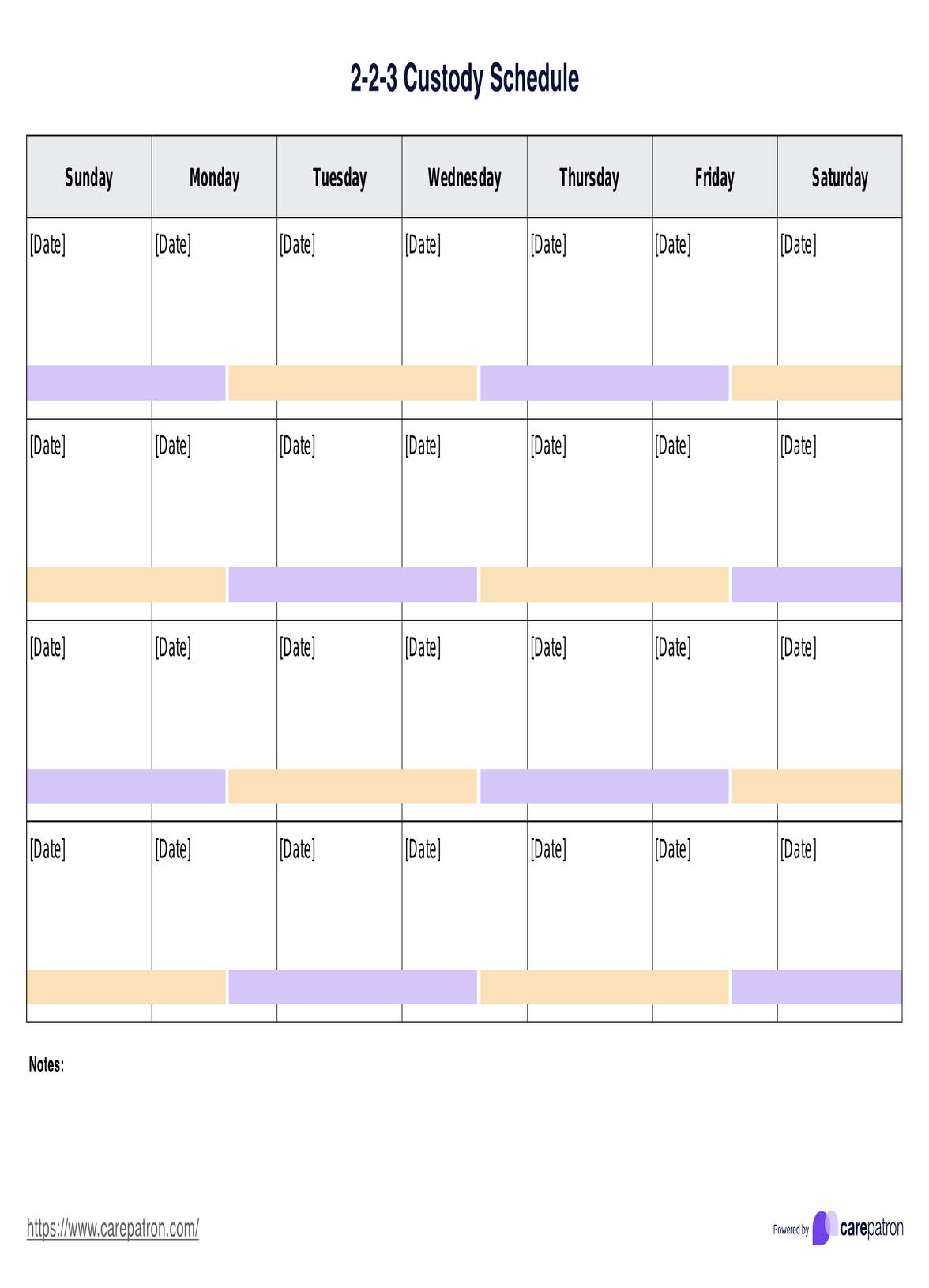This co-parenting schedule is best for families whose parents can share the parenting responsibilities equally, given that they live near each other and have flexible work schedules for this type of schedule.

2-2-3 Custody Schedule Template
Help your clients with joint custody situations create a parenting plan with our 2-2-3 Custody Schedule Template.
Use Template
2-2-3 Custody Schedule Template Template
Commonly asked questions
Upon agreement, parents can change the start of the day or the exchange times.
Parents are encouraged to use a calendar to manage and keep track of the exchange times and other details. When complete, the 2-2-3 schedule should be shared with both parents.
EHR and practice management software
Get started for free
*No credit card required
Free
$0/usd
Unlimited clients
Telehealth
1GB of storage
Client portal text
Automated billing and online payments











